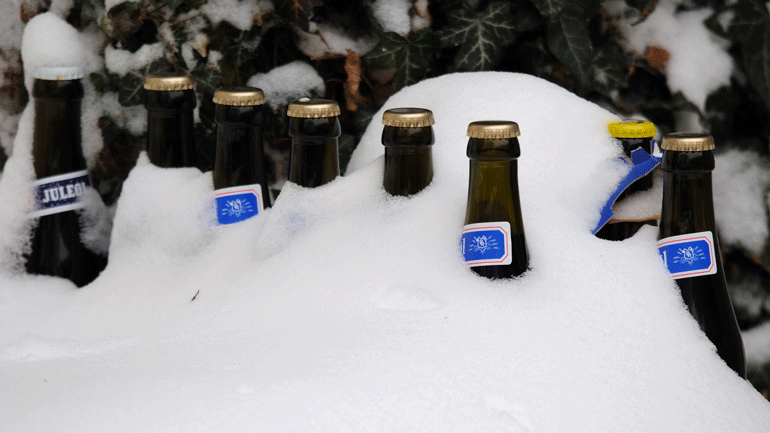Through the times, the drinking horns or glasses have been raised to a selection of religious figures. Today it's still a central and common part of enjoying the festive period, as close to all Norwegian breweries (from the largest to the smallest) produce their unique and prestigious "juleøl".
Drinking Yule
"The tradition of Yule ale is traced all the way back to a pagan mid-winter festival. And the word "Jól" (Yule) refers to this," says Associate Professor at the Department of Culture, Religion, and Social Sciences, Herleik Baklid, at the University of Southeast Norway.
The most reliable source for Yule celebration in pre-Christian times derives from the Norwegian skald Torbjørn Hornkloves’ tribute poem Haraldskvedet from around the year 900, where Yule is something that is drunk.
“Úti vill jól drekka” it says in the sixth verse, says Baklid.
"Back then, drinking was ceremonial,” says Baklid.
It is assumed that they drank toasts to the honour of Tor, Odin, Njord, and Frey.
- Interested in how the Vikings celebrated the winter solstice? Listen in as Herlik Baklid joins BBC-profile Cat Jarman in her podcast "Gone Medieval" (historyhit.com) to talk about just that.
Mandatory brew
According to the Christian law in Gulatingsloven, that reflects the legal conditions of the 12th century, it was mandatory for each household to drink in Christmas, but now one drank to the honour of Christ and Mary.
“The Catholic Church was strategic and allowed people to keep the old customs, but with new content. Therefore, the Christian Christmas celebration quickly gained entry,“ says Baklid.
He tells that beer was important in a ritual context, but also as an intoxicating drink. Sometimes in dangerously large quantities.
The rules stated that one should not drink themselves to a stupor during the holidays, but after the second day of Christmas, it was free for all, and the celebration could last until the 13th or 20th day of Christmas. Then people litterally swept out Christmas.
A community drink
“Yule ale has been drunk by all social classes. A community drink,” says Baklid.
Yule ale was to be brewed from malt, preferably barley. The grain was soaked, then dried and sprouted. It was common to use the best grain one had for this.
“Malt-making was men’s work, while women often took care of the brewing,” explains Baklid.
It was common to add hops to the beer for flavour, and brisket for colour and strength.
Hops were used to flavour the beer. In a tradition from Rollag in the region of Viken, it's said said that "the wicked" sat next to them and brewed their beer on the water that disappeared from the brewing. There was always less beer than the amount of water used. Much of the water was probably left in the malt and hops.
The stronger the better
“It was important not to brew on the winter solstice. Then the beer would not flow or it would become sour. If one heard crackling and bubbling in the brewing process, it was great fun. This was a sign that there would be a fight during the drinking, and people saw this as good entertainment,” says Baklid.
December 21st was in tradition called "Tomas brewer". Then the beer was to be tasted, and it was desirable to have strong beer.
"During tasting, it could be said: ‘It was far to the water when this beer was brewed’ or ‘This one kicks’. The beer was to be so strong that when the third tasted, the first should all ready be kveding,” says the historian.
Kveding is a Norwegian folk music tradition regarding sung poetry.
Baklid has used Olav Bø’s book “Vår norske jul”, Ørnulf Hodne’s book “Jul i Norge” and Brynjulf Alver’s book “Dag og merke” as references
